These are the Best Coconut Sugar Substitutes to use when choosing a natural alternative or if you’re unable to find coconut sugar at the local supermarket.

Coconut sugar, also known as coconut palm sugar, coconut crystals, or coco sap sugar is a natural sugar made from the sap of the coconut palm tree. It’s a healthy alternative to artificial sweeteners, so it often appears in low-calorie desserts and recipes.
In reality, coconut sugar has roughly the same calories as white sugar. The natural fiber known as inulin is present in coconut sugar.
For this reason, it won’t raise blood sugar levels as fast as table sugar and has a lower glycemic index.
As far as nutrition goes, there are more minerals and vitamins in coconut sugar than in the white refined variety. However, you’d have to consume way too much to get any benefits from these nutrients.
Despite popular belief, coconut sugar doesn’t taste anything like coconut. Instead, it tastes like brown sugar with hints of caramel. It’s slightly toasty, too, with unique smoky and musky qualities.
Unfortunately, it isn’t really all that common in the US. So if your recipe calls for coconut sugar, here are some of the best substitutes you can use in its place!
Quick read: 20+ Sugars and How to Use Them
Coconut Sugar Alternatives Overview
| Substitute | Ratio |
|---|---|
| Cane Sugar | 1:1 |
| Light Brown Sugar | 2/3 cup of light brown sugar for every cup of coconut sugar |
| Dark Brown Sugar | 1:1 (spooned not scooped) |
| White Sugar | 1:1 |
| White Sugar + Molasses | 1 cup white sugar + 1 tablespoon molasses = 1 cup coconut sugar |
| Date Sugar | 1:1 |
| Turbinado / Demerara Sugar | 1:1 |
| Sucanat | 1:1 |
| Honey | 1/4 cup of honey = 1 cup coconut sugar |
| Maple Sugar | 1:1 |
| Maple Syrup | 3/4 cup of maple syrup = 1 cup coconut sugar |
| Stevia | Add to taste; 1/3 cup for every cup if using liquid stevia |
| Xylitol | 1:1 |
| Erythritol | 1 1/3 cup erythritol = 1 cup coconut sugar |
| Molasses | Start with a 1:2 ratio. Add more if needed. |
| Agave Syrup | ½ cup of syrup for every cup |
| Monk Fruit Sweetener | 2/3 teaspoon monk fruit powder = 1 cup coconut sugar 288 drops monk fruit liquid = 1 cup coconut sugar |
| Jaggery | 1:1 (light jaggery) 3/4 cup dark jaggery = 1 cup coconut sugar |
| Panela (Piloncillo) | 1:1 |
Top Coconut Sugar Substitutes
Here are some of the best substitutes you can use in place of the real deal:
Cane Sugar

In terms of nutrients and calories, it is near-identical to regular cane sugar. It more or less contains the same amount of iron, calcium, zinc, and potassium, as well as soluble fiber inulin—a naturally-occurring soluble fiber that’s linked to a lower risk of blood sugar spikes.
Cane sugar tastes much like regular white sugar, except it is a little smokier and richer because of the natural molasses it contains. It also has an earthy, oxidized aroma to it, much like coconut sugar.
To substitute with cane sugar, use a 1:1 ratio.
Light Brown Sugar
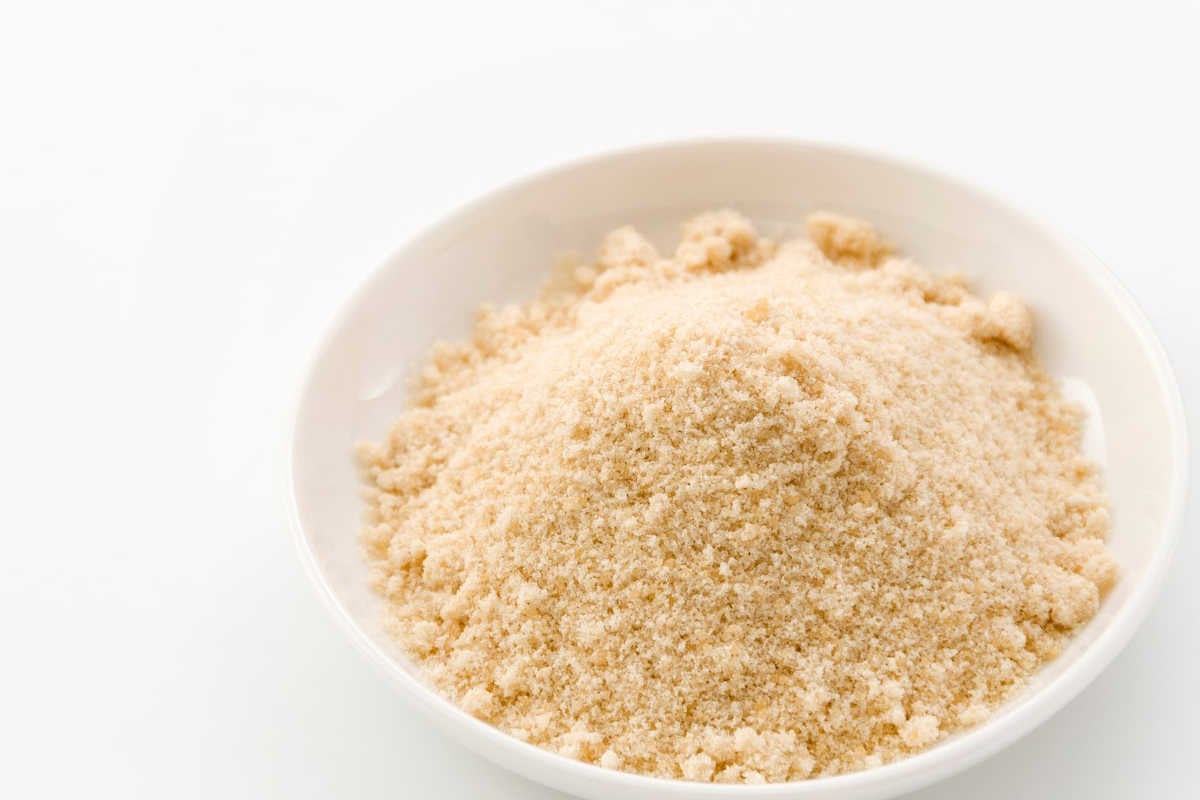
Light brown sugar is much easier to find in the US, making it a great alternative for recipes.
When placed side-by-side, light brown sugar looks quite similar to coconut sugar. They’re both light brown in color and have the same granular consistency.
They’re nearly identical in taste, too. Like coconut sugar, brown sugar has a strong caramel taste because of the molasses it contains. It always adds a nice depth of flavor to baked goods such as cookies and muffins!
Brown sugar is slightly sweeter though, so reduce the recipe’s sugar content when using it.
For every cup of coconut sugar required, use about 2/3 cup of light brown sugar.
Don’t press the substitute sugar into the measuring cup; keep it loose.
Dark Brown Sugar

The flavor of dark brown sugar is definitely more intense than coconut or light brown sugar but if this is what you have, it can be used as a substitute.
It may actually work better for some dishes, like these air fryer sweet potatoes.
The high molasses content of dark brown sugar will also darken your baked goods. It might also affect the texture of some recipes such as cookies, making them a little more chewier.
Replace 1 cup of coconut sugar with 1 cup of dark brown sugar.
The substitute is higher in moisture than coconut sugar so make sure you spoon the dark brown sugar in the measuring cup to avoid overpacking.
White Sugar

This is probably the most convenient way to replace coconut sugar and most of us already have some in the pantry!
White sugar, also known as granulated sugar, lacks the caramel notes of coconut or brown sugar although its simple sweetening effect will be enough for most recipes.
You can replace one cup of coconut sugar with 3/4-1 cup of white sugar. White sugar is sweeter than coconut sugar, which is why you can use less.
For a taste profile closer to coconut sugar check the next substitute!
White Sugar + Molasses
Brown sugar might be an excellent substitute for coconut sugar, but what if you don’t have it?
As long as you have some white sugar and molasses on hand, you can make your own. Most brown sugar available in stores is actually white sugar mixed with molasses.
1 cup of white sugar + 1 tablespoon of molasses = 1 cup of coconut sugar
You can add up to 1 extra tablespoon of molasses if you want a deeper caramel flavor in which case your homemade substitute will be more similar to dark brown sugar.
Date Sugar

Like coconut sugar, date sugar is a product of a fruit tree and thus less processed than more conventional sugars. It’s made from oven-dried dates that are grounded to granules.
Compared to most commercially available sugars, this natural variety is richer in fiber and minerals.
Date sugar has a subtle butterscotch-like flavor, which isn’t that far off from coconut sugar.
Since date sugar is just as sweet as coconut sugar, use a 1:1 ratio when substituting one with the other.
Turbinado Sugar

Turbinado sugar, also known as raw sugar, is minimally processed and refined sugar that retains some of the original sugar cane juice that’s rich in molasses.
This gives it a subtle caramel-like flavor. It’s healthier than fully refined sugar, making it a good choice for health-conscious individuals.
It has larger crystals than coconut sugar. This means Turbinado sugar doesn’t melt into the batter well while baking, leaving you with a lightly crunchy and sparkly exterior. The added texture isn’t necessarily a bad thing, though; some people are quite fond of it!
Turbinado sugar dissolves just fine in sauces, marinades, and creamed mixtures, so if you’re making any one of those, this is a wonderful substitute.
Use a 1:1 ratio when replacing.
Demerara is another type of raw sugar similar to Turbinado and it would also work as a 1:1 substitute.
Sucanat
Sucanat is a brand of whole cane sugar that’s very close to coconut sugar in terms of color and flavor.
Like brown sugar varieties, Sucanat contains some molasses although it has a smaller granulation. Compared to brown sugar, Sucanat is not processed to remove molasses only to add it back in later. The naturally present molasses is retained in the sugar crystals.
Use a 1:1 ratio when swapping coconut sugar for Sucanat.
🍯 Honey
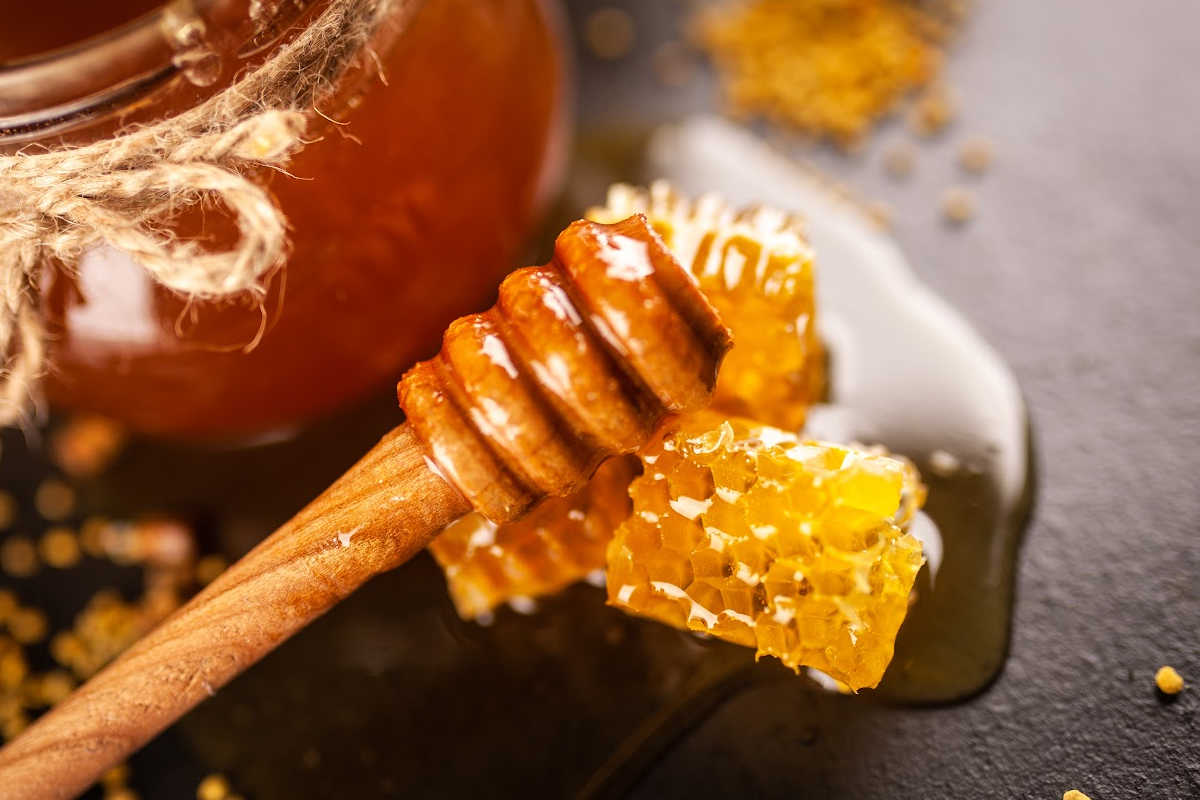
Honey is a popular substitute because it’s delicious, versatile, and available nearly everywhere. Plus, it’s a healthy natural sweetener —healthier than refined sugar, at least.
Honey is believed to prevent heart diseases, aid in blood sugar management, eliminate unwanted bacteria, and it has other benefits. So, if you’re using coconut sugar for its health benefits, honey is a good stand-in.
The best part about honey is it works for both sweets and savory recipes like this excellent honey teriyaki chicken recipe or a super easy dish like oven-roasted honey gold potatoes.
If you’re able, opt for raw honey instead of pasteurized. Raw honey is generally healthier than pasteurized honey as it doesn’t contain any hidden ingredients. It’s the real true form of honey, so it has a more complex and unique flavor that goes smashingly in desserts.
Since honey comes in liquid form, use about ¼ cup of honey for every cup of coconut sugar required.
You may also need to reduce the liquid content of your recipe so as to not change its consistency.
Maple Sugar
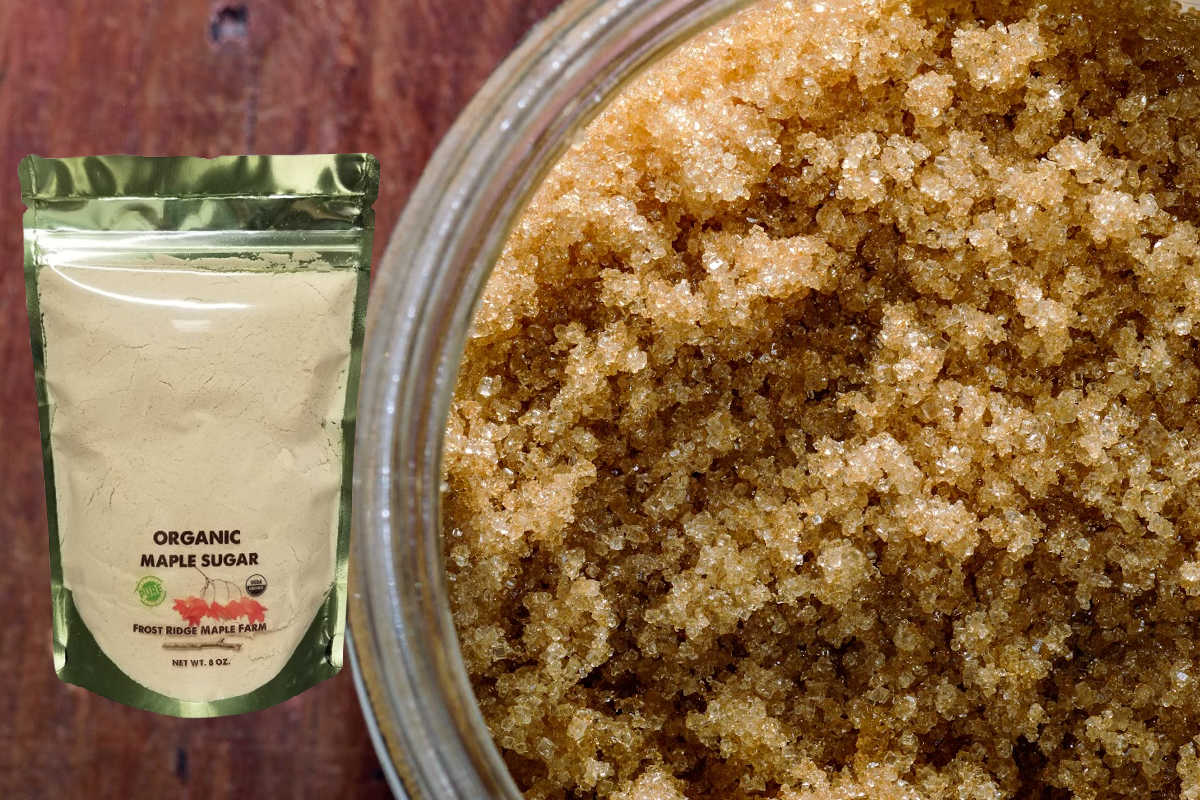
Maple sugar has a similar flavor profile, so it works well in recipes that require coconut sugar.
Maple sugar adds a caramel and nutty flavor to baked goods and dishes. However, it has a slightly more complex flavor profile. As you might expect, it tastes faintly of maple. It also has hints of butter and vanilla to it.
When using maple sugar as a substitute, use a 1:1 ratio.
Maple Syrup

If you can’t get your hands on maple sugar, maple syrup works just as well. Made from the sap of maple trees, it definitely leaves a more distinctive taste, but it adds a welcome depth of flavor to desserts and savory dishes.
For every cup of coconut sugar required, use only 3/4 cup of maple syrup. You’ll need to adjust the liquid content of your recipe.
Enjoy the deliciousness of maple syrup in our amazing avocado brownies, or easy air fryer granola!
Stevia

Stevia is a low-carb substitute that’s available in both powder and liquid form.
This sugar-free sweetener is made from the leaves of a stevia plant, which is native to Paraguay and Brazil.
Stevia has fewer calories than both regular sugar and coconut sugar, and may thus aid in weight management. It also won’t raise your blood sugar levels.
For this reason, stevia is the go-to choice for individuals on a strict low-calorie or low-carb diet.
Stevia doesn’t have much going on for it in terms of flavor. It really just tastes sweet. When added to coffee or tea, it might taste a bit like menthol, but the menthol is so faint it’s practically nonexistent.
Note: Stevia is 50 to 300 times sweeter than coconut sugar, so use sparingly!
Taste and adjust until you reach the desired sweetness. Generally, for every half cup of coconut sugar required, only use 1 teaspoon of stevia. That may seem like almost nothing, but trust me, that’s more than enough.
If you’re using liquid stevia, use about 1/3 cup for every cup of coconut sugar replaced by stevia. But again, add to taste!
Xylitol
Xylitol is a refined sweetener although it is plant derived. This sugar alcohol has one incredible benefit: it has half the calories of white sugar allowing us to enjoy some lighter homemade sweets.
A 1:1 ratio will work for most coconut sugar substitutions although xylitol is sweeter so you might want to use less.
Erythritol
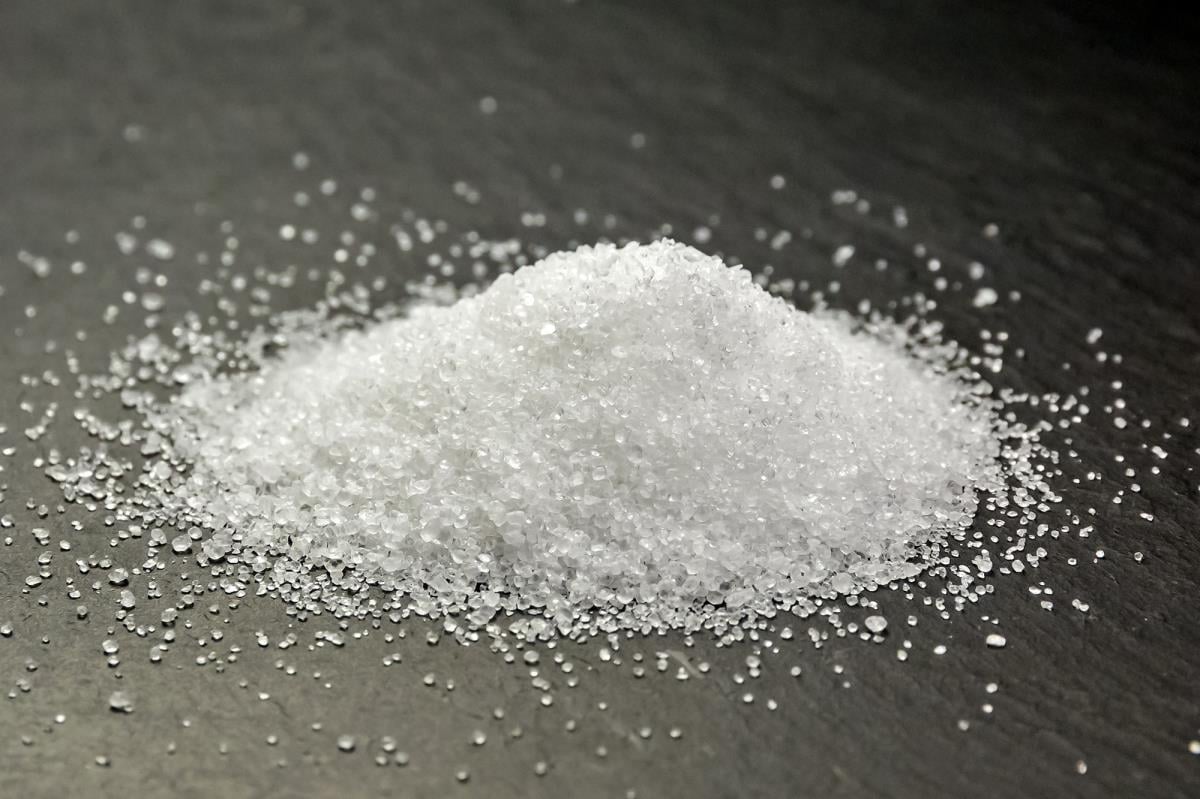
This is another sugar alcohol with a low glycemic index. One gram of erythritol has just 0.24 calories, compared to table sugar which packs 4 calories per gram.
Erythritol and coconut sugar can replace each other in both cooking and baking. Since erythritol is not as sweet as coconut sugar a 1:1 ratio won’t work.
Use 1 1/3 cup of erythritol to replace 1 cup of coconut sugar.
Since you’ll be adding more of a dry ingredient, some recipes might need to adjust the liquid ingredients as well.
Molasses

Molasses shares the same toffee-caramel flavor as coconut sugar. Molasses is a bit smokey and faintly acidic than the real thing, but the difference isn’t all that noticeable in the final product.
When substituting with molasses, keep in mind that there are four kinds of molasses: light, medium, dark, and blackstrap.
Light molasses is the best substitute because of its mild flavor. I love it for holiday-themed treats like this gingerbread granola!
Medium and dark molasses bring a robust, in-your-face flavor, and while not unpleasant, it doesn’t work for some recipes.
Blackstrap molasses is bitter and considerably less sweet, so it’s not a good substitute for coconut sugar.
As for the ratio, add to taste. Start with half a cup of molasses for every cup of coconut sugar required, and go from there. And remember to adjust the liquid content of the recipe, too.
Agave Syrup
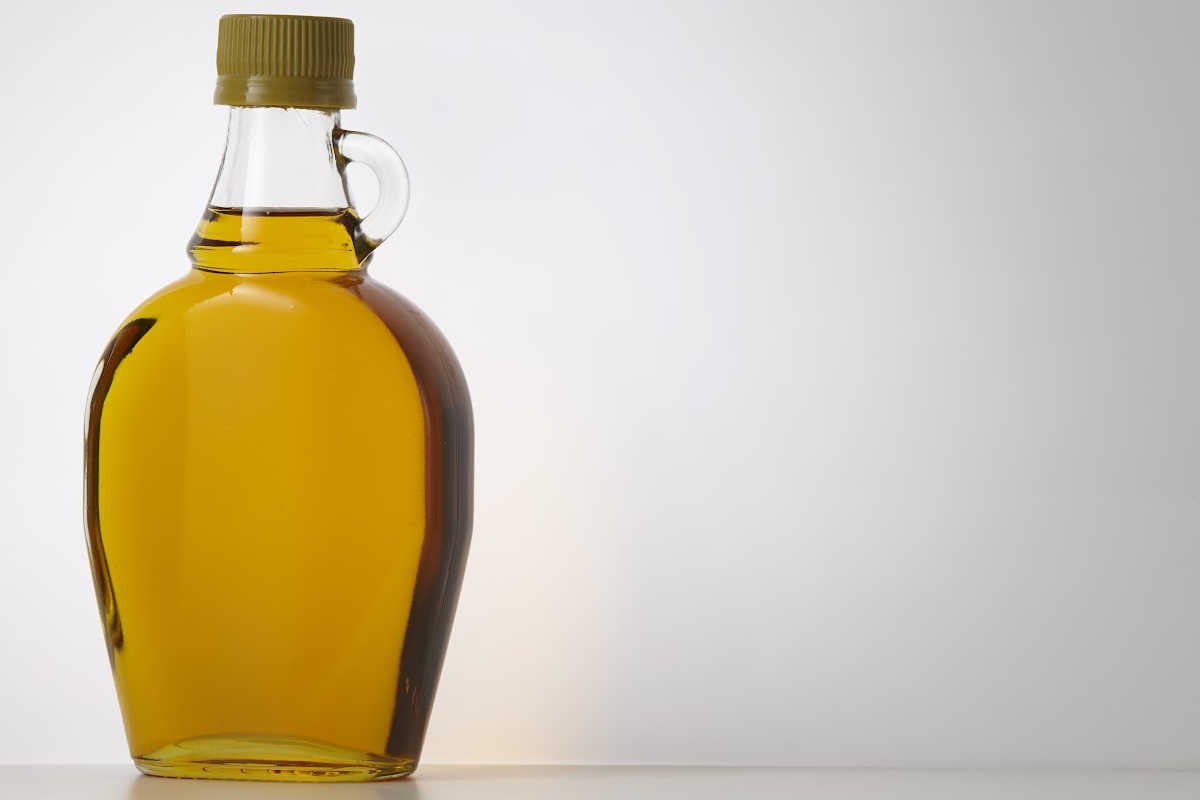
Agave syrup, also known as agave nectar or maguey syrup, is a sweetener made from the fluid of the blue agave plant. It’s a popular sweetener for beverages, toppings, and baked goods because it tastes like a combination of honey and maple syrup.
That said, agave syrup contains high amounts of carbohydrates, fructose, and calories, so don’t use too much, too often.
When using agave syrup as a substitute, use half a cup of syrup for every cup of coconut sugar required.
Monk Fruit Sweetener
Monk fruit sweetener comes from the same name fruit and although it can be 200-300 times sweeter than regular sugar.
It’s available in powder and liquid form, as well as blended with erythritol to create a 1:1 sugar substitute.
Because of its potent sweetness, you’ll need a lot less monk fruit extract, to replace coconut sugar. This applies to both powder and liquid monk fruit sweetener as long as it’s in pure form and not a blend (for blends check the label for an accurate substitution ratio).
1 cup coconut sugar = 2/3 teaspoon monk fruit powder
1 cup coconut sugar = 288 drops monk fruit liquid
Jaggery

Produced from cane juice, palm sap, or date sap Jaggery is common in Southeast Asia.
Jaggery lacks the typical granulation of most sugars and it’s usually shaped like bricks.
Light jaggery is a 1:1 coconut sugar substitute. For dark jaggery use only 3/4 cup to replace 1 cup of coconut sugar.
Panela
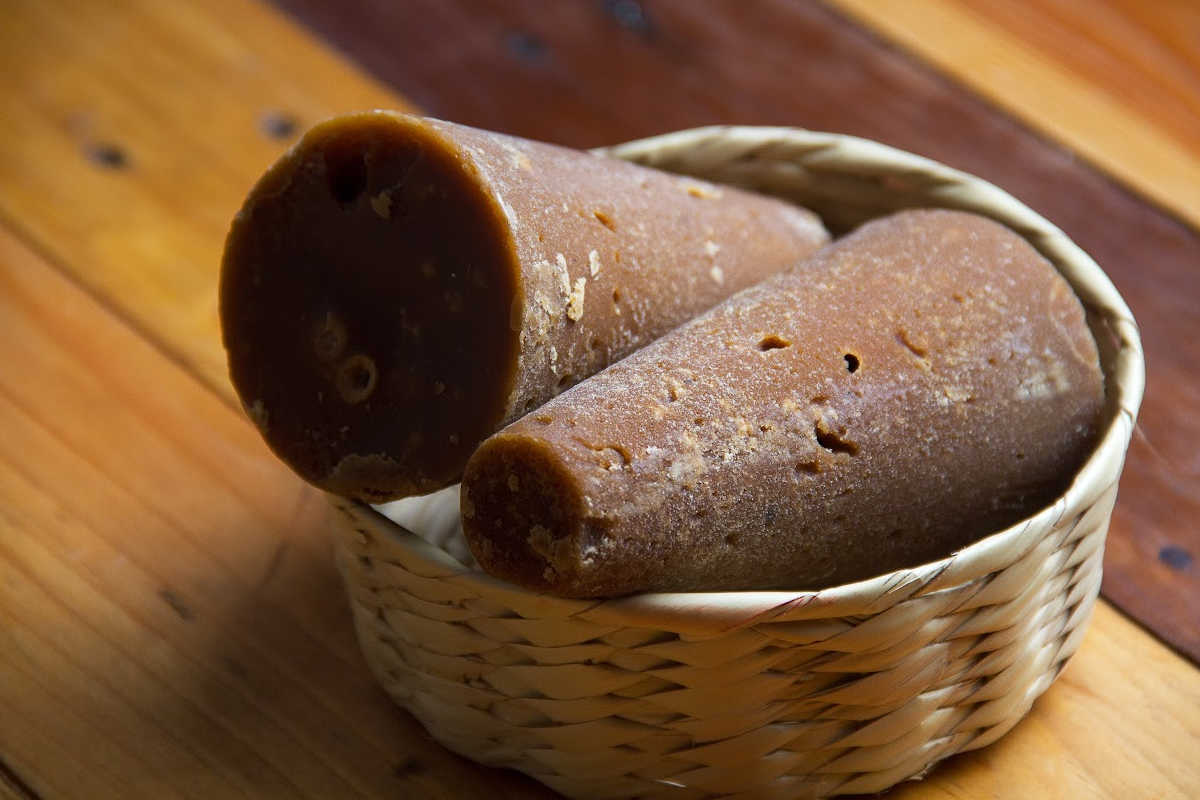
Panela or Pilloncillo, also known as Mexican brown sugar, is made from unrefined whole cane sugar similar to Jaggery. It’s common not just in Mexico, but also in other countries in Latin America.
It has an earthy, caramel-like taste to it. But that’s where the similarities end.
Panela is mildly smokey in flavor—much like molasses or burnt sugar. It greatly differs in texture, too. Still, piloncillo is a great substitute if you don’t have the alternatives above available.
To use panela, slice or chop it up into small chunks. You can also use a large cheese grater. Then, use a 1:1 ratio.
Final Thoughts
Coconut sugar is one of the increasingly popular types of sugar as it adds a unique flavor to baked goods and savory dishes. It’s especially popular in Southeast Asian cuisine, particularly in Indonesia and Sri Lanka.
Although it isn’t that common in the Western world, you can replace it with the substitutes above.
The closest replacement in terms of taste is brown sugar, followed by cane sugar. For a more complex flavor, use honey, maple syrup, or date sugar.
Related Articles
Hi!
Ginny Collins is a passionate foodie and recipe creator of Savor and Savvy and Kitchenlaughter. Indoors she focuses on easy, quick recipes for busy families and kitchen basics. Outdoors, she focuses on backyard grilling and smoking to bring family and friends together. She is a lifelong learner who is always taking cooking classes on her travels overseas and stateside. Her work has been featured on MSN, Parade, Fox News, Yahoo, Cosmopolitan, Elle, and many local news outlets. She lives in Florida where you will find her outside on the water in her kayak, riding her bike on trails, and planning her next overseas adventure.










Leave a Reply